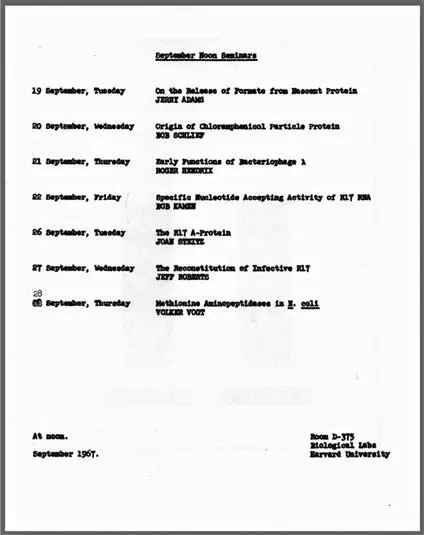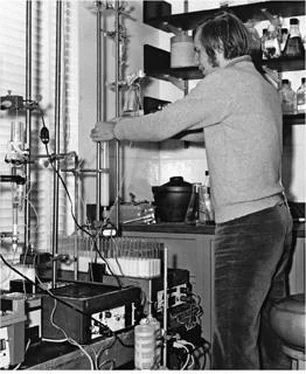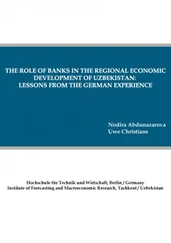James Watson - AVOID BORING PEOPLE - Lessons from a Life in Science
Здесь есть возможность читать онлайн «James Watson - AVOID BORING PEOPLE - Lessons from a Life in Science» весь текст электронной книги совершенно бесплатно (целиком полную версию без сокращений). В некоторых случаях можно слушать аудио, скачать через торрент в формате fb2 и присутствует краткое содержание. Жанр: Биографии и Мемуары. Описание произведения, (предисловие) а так же отзывы посетителей доступны на портале библиотеки ЛибКат.
- Название:AVOID BORING PEOPLE: Lessons from a Life in Science
- Автор:
- Жанр:
- Год:неизвестен
- ISBN:нет данных
- Рейтинг книги:5 / 5. Голосов: 1
-
Избранное:Добавить в избранное
- Отзывы:
-
Ваша оценка:
- 100
- 1
- 2
- 3
- 4
- 5
AVOID BORING PEOPLE: Lessons from a Life in Science: краткое содержание, описание и аннотация
Предлагаем к чтению аннотацию, описание, краткое содержание или предисловие (зависит от того, что написал сам автор книги «AVOID BORING PEOPLE: Lessons from a Life in Science»). Если вы не нашли необходимую информацию о книге — напишите в комментариях, мы постараемся отыскать её.
AVOID BORING PEOPLE: Lessons from a Life in Science — читать онлайн бесплатно полную книгу (весь текст) целиком
Ниже представлен текст книги, разбитый по страницам. Система сохранения места последней прочитанной страницы, позволяет с удобством читать онлайн бесплатно книгу «AVOID BORING PEOPLE: Lessons from a Life in Science», без необходимости каждый раз заново искать на чём Вы остановились. Поставьте закладку, и сможете в любой момент перейти на страницу, на которой закончили чтение.
Интервал:
Закладка:
Nancy became a graduate student again in the fall of 1967 and continued to work in Mark's lab. I had told her to apply to Harvard and a week later she was formally accepted. Mark also encouraged her, saying she was brighter than any of the relatively few women and more than half the men at Harvard. She glowed in the knowledge of the approval of someone she revered. After the misery of Yale, everything had worked out, including her engagement to Brook: soon after becoming Mark's technician she had also become Nancy Hopkins. They moved to Trowbridge Street, their apartment graced by my wedding present of a life-size leather pig, similar to one Brook had long admired in his exclusive “final club” on Massachusetts Avenue.
After his second paper came out, Mark devoted more time to being a visible leftist, joining several South American neurophysiologists in Havana, where he met the cartoonist Jules Pfeiffer. Later he would go to Hanoi and Saigon on a trip organized by a former junior fellow, the MIT linguist Noam Chomsky. Over the past year, our tearoom conversations had centered more on Vietnam than on science, and I remained glued to an issue of the New York Times covering the Tet offensive all through a talk by MIT's Ethan Signer on bacterial-gene-carrying λ phages.
Earlier Benno and Jon Beckwith had marched down Massachusetts Avenue from Cambridge to Boston to demonstrate against America's Southeast Asia policy, discussing λ phages along the route. Immediately following Tet, Benno went with his soon-to-be wife, Barbara, to New York City for a big antiwar rally in Central Park. Equally anti-establishment in outlook, Barbara had first met Benno at one of Mark's parties in his flat north of the Biolabs, on Sacramento Street. Mark's blond-haired, live-in girlfriend, Micky, was from an even more leftist, if not Stalinist, background. Mark frequently escaped with his violin to their cottage on Cape Cod for weekends of heavy fellow-traveler chitchat.In the summer of 1967, Wally and Celia Gilbert's three-year-old daughter, Elsbeth, was diagnosed with an incurable metastatic sarcoma. They made constant visits to Children's Hospital, compounding Wally's exhaustion when he got back home from late evenings in the lab. His two other children, John and Kate, earlier had thrilled to their father's eureka at finding the repressor. Now the mood of the house on Upland Avenue was grim. Hoping to distract them, in mid-fall I persuaded an ABC-TV producer, Ernie Pendrell, to feature Wally and Mark on a forthcoming TV special about science. Initially he had wanted to do an hourlong feature about my work, sponsored by North American Rockwell. But I told him the race for the repressor would show science at its brightest, making the public aware that ambitious young scientists, like young poets, are more creative when not encumbered by the braking powers of maturity, which I already felt nipping at my own heels. With Harvard's approval, an ABC crew came during the second week of February 1968 and followed me and Wally walking in Harvard Yard with Wally's children eagerly asking on cue, “Did you find it yet, Daddy?” A week later, the crew returned for a raucous Lincoln's Birthday party I threw in my Appian Way flat.
By then, Mark was secure in the knowledge that as of July 1, he would be a member of the Harvard faculty. By appointing him a lecturer in biochemistry instead of an assistant professor, the University could match the salary recently offered him to be an associate professor at Berkeley. In support of his appointment, Francois Jacob wrote to Paul Doty that “Mark is the most gifted young man in his
generation of biologists.” Franklin Ford orchestrated swift movement by the administration. The day after Christmas he wrote to tell me Ptashne was confirmed in his decision to stay at Harvard. Several months after, when Mark's appointment formally began, the Harvard Council of Deans honored him and Wally with the prestigious Ledlie Award for 1968, which included a $1,600 honorarium.
Noon seminars from September 1967

Frank Stahl (back to camera), Gerald Seher, Mark Ptashne, Wally Gilbert, and Celia Gilbert at the 1968 Cold Spring Harbor symposium

Wally Gilbert and Max Gottesman at Cold Spring Harbor in 1968
By then Benno had returned to Germany as a professor at the Genetics Institute of the University of Cologne. Before going, he again made elegant use of E. coli genetics to generate a mutant that overproduced the lac repressor. Putting this mutant gene on a λ-like phage led to hundredfold amounts of the typical lac repressor output. Just before Benno left Harvard, Jacques Monod was visiting and popped his head in to say hello and comment on Benno's identification of the lac repressor, remarking, “After all, Benno, it was pedestrian.” Then he turned around and left. It was Jacques's sour grapes way of admitting that clever experiments, not a clever idea, had beaten him and his friends at the Institut Pasteur. With Benno, Wally, and Mark's success, the center of gene regulation was now not Paris but Harvard.An unanticipated by-product of Wally's lac repressor purification effort was helping my graduate student Dick Burgess to optimize his RNA polymerase purification methodologies. More than ever, our lab wanted further insight into how RNA is made from DNA templates. In 1963, I'd had my graduate student John Richardson focus his Ph.D. research on RNA polymerase, the enzyme responsible for making RNA off DNA. RNA polymerase was discovered in 1959, but its molecular form was not easy to pin down. John found that the molecular weight decreases by half when the molecule is suspended in a highly ionized solution. But even this smaller form was larger than any known single polypeptide chain, so it seemed likely that RNA polymerase was constructed from a number of smaller polypeptides. No deep insights, however, came from electron microscopy done at MIT. It revealed approximately spherical particles 120 Ä in diameter, compatible with a molecular weight of almost a million atomic mass units. Just before leaving for Paris to become a postdoc at the Institut Pasteur, John used phage T7 templates to demonstrate the synthesis of RNA products containing up to ten thousand bases. Conceivably their long lengths reflected failure of the purified enzyme to recognize normal T7 stop signals for RNA synthesis.
After John left for France, Dick Burgess, who had just arrived from Caltech, took up the challenge presented by RNA polymerase's large size. Every week Wally's technician Chris Weiss separated the proteins
from thirty liters of E. coli cells into several fractions. The one containing the lactose repressor went to Wally and Benno, while Dick took the fraction containing RNA polymerase. The latter still contained many, many other proteins, requiring him to work out a glycerol gradient centrifugation procedure that yielded a highly active RNA polymerase preparation that he called GG. Starting late in 1967, he added a phos-phocellulose column step to his recipe, leading to even purer RNA polymerase, called PC RNA polymerase.In April 1968, Dick gave a talk at the Federation Society meeting in Atlantic City revealing that PC RNA polymerase particles were made up of small subunits, called a, and large subunits, called ß. Two months later, at the Gordon Conference on Nucleic Acids in New Hampshire, he gave out details of his GG and PC purification methods, later sending written protocols to some ten interested labs, including that of Ekke Bautz at Rutgers. By then Wally's graduate student Jeff Roberts was also studying RNA polymerase. Initially using Dick's GG purified enzyme, he found it very active in transcribing λ DNA. But later, using Dick's even more purified PC preps, he inexplicably found no transcription of λ DNA.
Читать дальшеИнтервал:
Закладка:
Похожие книги на «AVOID BORING PEOPLE: Lessons from a Life in Science»
Представляем Вашему вниманию похожие книги на «AVOID BORING PEOPLE: Lessons from a Life in Science» списком для выбора. Мы отобрали схожую по названию и смыслу литературу в надежде предоставить читателям больше вариантов отыскать новые, интересные, ещё непрочитанные произведения.
Обсуждение, отзывы о книге «AVOID BORING PEOPLE: Lessons from a Life in Science» и просто собственные мнения читателей. Оставьте ваши комментарии, напишите, что Вы думаете о произведении, его смысле или главных героях. Укажите что конкретно понравилось, а что нет, и почему Вы так считаете.












